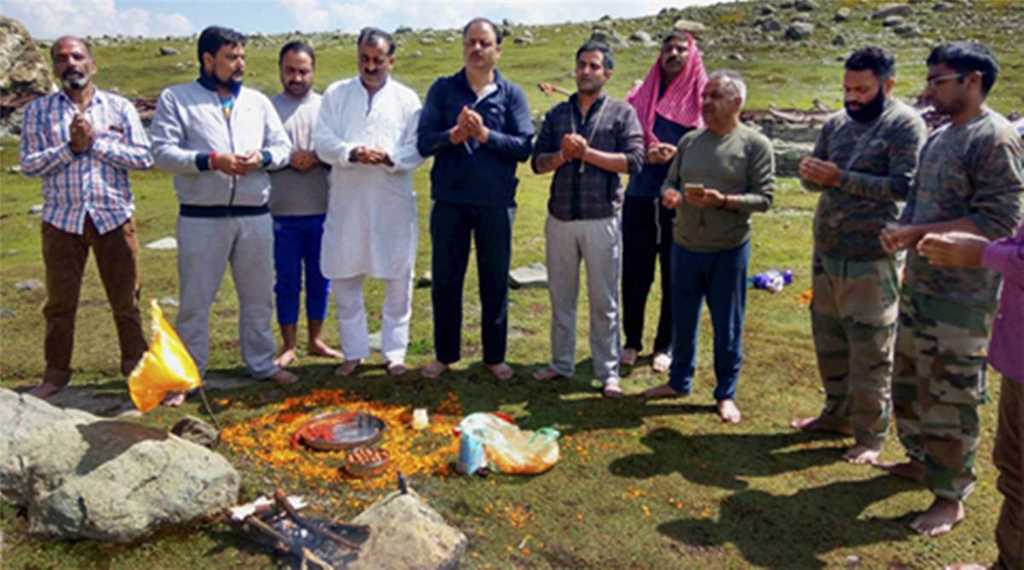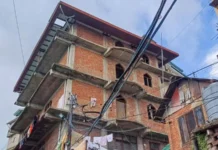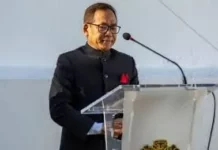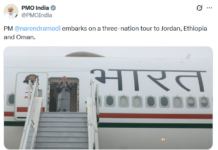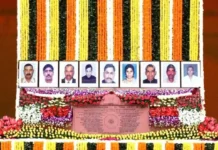NEW DELHI: During 1989-1990, when the forced exodus of the Kashmiri Pandits (KPs) took place from Kashmir, a few thousands did not leave the valley. Not much was heard of them except for a few prominent political or business families as migrant KPs chose to ignore those who stayed back.
Many KPs who took shelter in Jammu did express sympathy for those left in the valley. It was common to hear from the migrant KPs that those who stayed back would probably convert to Islam under duress. While the KPs kept trickling out of the Kashmir valley after the initial deluge, no effort was made to comprehend the plight of those who stayed put. The Central government counted just about 18,000 KPs living in the valley around the time when the Governor’s Rule ended in 2006.
A pall of gloom wrapped the minuscule community in March 1997 when seven KPs were killed in Sangrampura. In June 1997, a public transport bus was stopped on the Gool-Ramban road and three KP passengers were singled out and killed. In January 1998, 23 KPs were murdered in the hamlet of Wandhama. Another massacre took place in Naadimarg in March 2003 when 24 men, women and children fell to the guns of terrorists. The list is long and painful.
The KP community outside Kashmir denounced these killings and raised a hue and cry, but only a few visited the valley to check out the fate of those who were still there. After these gruesome acts, the government shifted the handful KP families from remote hamlets to district headquarters. Living in isolation and with fear, they became the victims of physical and mental strain. For the Kashmiri Hindus, not just the insecurity, but the loss of contact with relatives and friends, loss of income and jobs, the fear of losing revenue records and title to their lands added to their misery. In that dark period, nearly 150 families, including some in Srinagar, was living in impoverished conditions, eating their meals at the nearest Gurdwara langars.
The land mafia took advantage of the situation and started grabbing the neglected lands, including unattended temple properties. To make the matters worse, the temple trusts had become dysfunctional since 1990. The trustees had fled Kashmir and others sold off the trust lands under the belief that return to the valley was improbable, therefore, the deal being offered by the land mafia was too good to pass. In desperation, the valley KPs began to establish new temple boards in order to maintain the upkeep of some temples and sought legal intervention to block the transfer and sale of temple lands to third parties.
A community census was completed in June 2010 which showed the population of KPs at around 4,000, with 20 per cent living in the Srinagar district, 24 per cent living in the Anantnag district, 21 per cent living in the Pulwama district, with the rest scattered in the remaining seven districts in Kashmir. The census gave a picture of gender distribution, employment situation, marriages conducted, births and deaths recorded in the valley in the previous two decades (1990-2010).
The Prime Minister’s employment package for KPs-called the ‘Rules of 2009’ to be implemented through SRO 412-was announced during the PM’s visit to the state in April 2008 to provide employment to the KPs. Surprisingly, the state government ruled that the PM’s employment package was only applicable to ‘migrant KPs’ and not to the unemployed KPs living in the valley. Efforts to request non-valley KP leaders to raise the demand of extending SRO 412 to valley-based KPs, who too were displaced and impoverished went unheard.
Finally, the state government extended the ‘Rules of 2009’ to the valley based KPs in 2017 by approving SRO 425 in October 2017, after an eight-year delay. But as soon as SRO 425 was issued, the valley-based Sikh community blocked its implementation in the state court. After another legal battle, the state High Court gave a judgement in favor of KPs in March 2019 which remains unimplemented till today. The effort of the valley-based KPs is to secure at least 500 jobs under ‘Grade 4’ recruitment drive by the now UT Government that will provide for 16,847 new hires in the UT during 2020-2021.
Little is known about the agony of the 800 odd KP families who call Kashmir valley their home today. They are the owners of small orchards, shopkeepers, teachers in public and private schools, various government departments, and a few of them are working as real estate agents. Some work for Dharmarth and Batra Trusts and yet others work at Yatri Niwas group of hotels catering to religious tourism. They were mostly unknown until one of them, a Sarpanch named Shri Ajay Pandita, was killed by terrorists on June 8, 2020.
The handful of ‘non-migrant’ KPs have survived in spite of being ignored by the rest and while their future looks bleak, they have shown persistence and resilience of the highest standards. Today, they are truly keeping the ancient culture, religion, and customs of Kashmir alive in an adverse environment.

